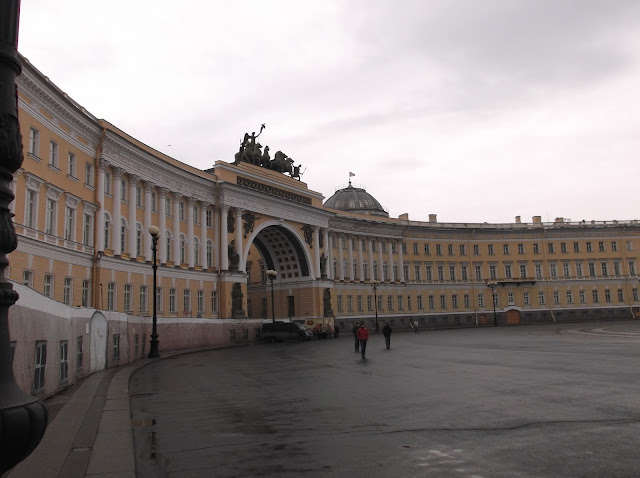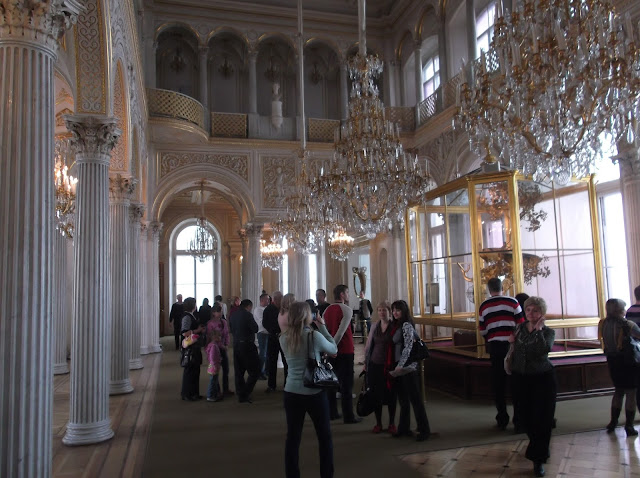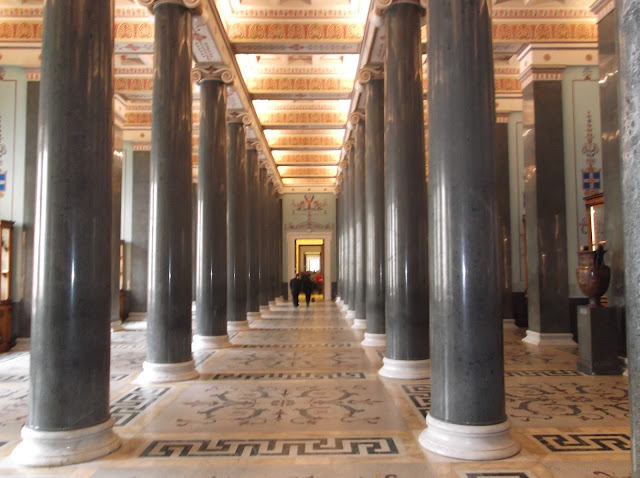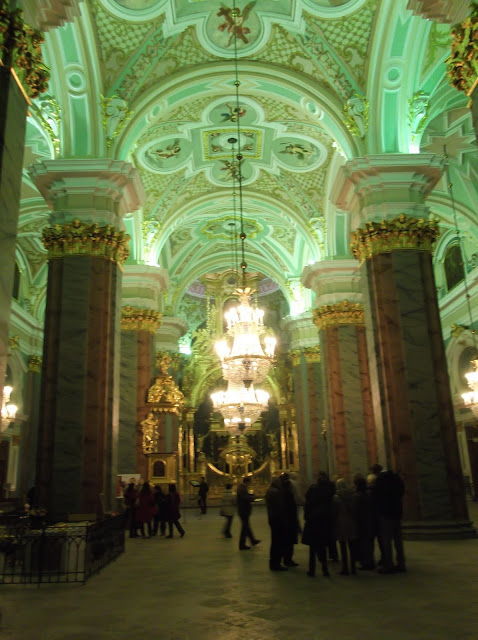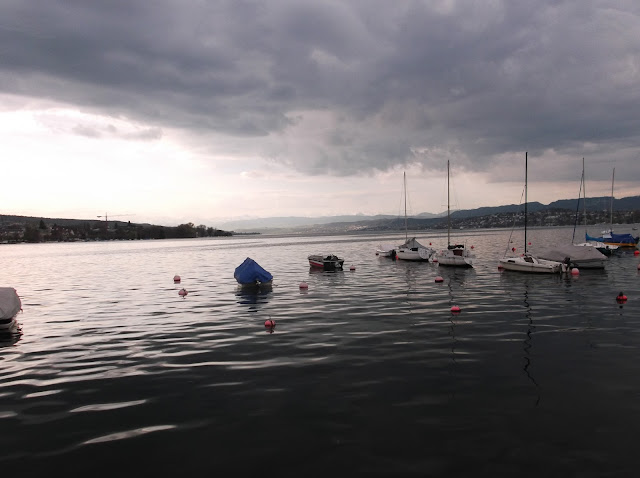The main tourist attraction in St. Petersburg is the Hermitage Museum, one of the world's greatest museums. The museum is composed of several former Czarist palaces, the largest of which is the Winter Palace, known for its trademark light green exterior. It is located on Palace Square, with the Neva River on the opposite side. I spent the better part of two days walking through the museum, and since I'm no expert on art, I spent most of the time admiring the interior rooms of the former palaces. It is said that the museum has over 3 million items on display, and that to merely glance at each item would take nine years. The corridors of the museum are approximately ten kilometers in length [over six miles.] These pictures are of the outside of the museum from the Palace Square entrance side, and from the back side as viewed across the frozen Neva River.
On the opposite side of Palace Square from the front of the Hermitage Museum is the former General Staff Headquarters, which now holds part of the museum collection. One morning when I was walking through the square on my way to see some other sights, there was a small group of people in the square holding signs apparently protesting something, which caused the arrival of a group of riot police. I didn't stick around to see what happened.
These are pictures of some of the interior rooms of the Hermitage Museum, which are former public rooms of the Czarist palaces. Art and sculptures were displayed in all of the rooms, but I enjoyed the majesty of the rooms themselves. Pictures do not do justice to the beauty and size of the rooms.
Across the Neva River from the Hermitage Museum, on Zayachiy Island lies the Peter and Paul Fortress. The fortress was built in 1703 by the use of forced laborers who died in the thousands. Parts of the fortress were later utilized as a prison, where prisoners were held after the overthrow of the Czarist government by the Bolsheviks. Now the fortress has been restored to show the size of the walls and bulwarks, and is the location of the Peter and Paul Cathedral [which was undergoing restoration work on the exterior.] The following photos show the fortress from across the river Neva, crossing the moat bridge through the entrance gate, and the exterior and interior of the Peter and Paul Cathedral. Within the nave of the cathedral the Romanov royal monarchs are buried.
Close to the Hermitage Museum is a statue of Peter the Great called the Bronze Horseman. Peter the Great was the architect of the Russian Navy, and the statue was a gift to St. Petersburg from the city of Amsterdam where Czar Peter worked as a common laborer in the shipyards to gain the skills required to build the Russian Navy.
One of the major tourist attractions in St. Petersburg is St. Isaac's Cathedral, just a short walk from the Hermitage Museum. St. Isaac's is the largest cathedral in St. Petersburg. You can climb to the top of the dome by way of a winding staircase between the interior and exterior walls of the dome. From the top of the dome you have a 360 degree vista of St. Petersburg, including of the Hermitage Museum shown in the last photo.
One of the most photographed churches in St. Petersburg is the Resurrection Church of Our Savior, also known as the Church on Spilled Blood. It was built on the site of the assasination of Tsar Alexander II in 1881 on the orders of his successor, Tsar Alexander III in 1883. After the Bolshevik Revolution the church was turned into a storeroom, then a museum of mosaics in 1970, then closed again for two decades before being reopened in 1997. It is now one of the most visited tourist attractions due to its unique style of design.
On my return flight home from St. Petersburg I had an overnight connection in Zurich, Switzerland. Although I stayed in a hotel at the airport, Zurich itself was only a ten minute train ride from the airport. I took the train into Zurich the afternoon I arrived and walked along the Limmat River, and the shores of Lake Zurich and had dinner in town. The next morning, I went into town for another walk along the river and the shore of the lake before my return flight home. It was the conclusion of a wonderful trip to St. Petersburg, and the beautiful city of Zurich.






